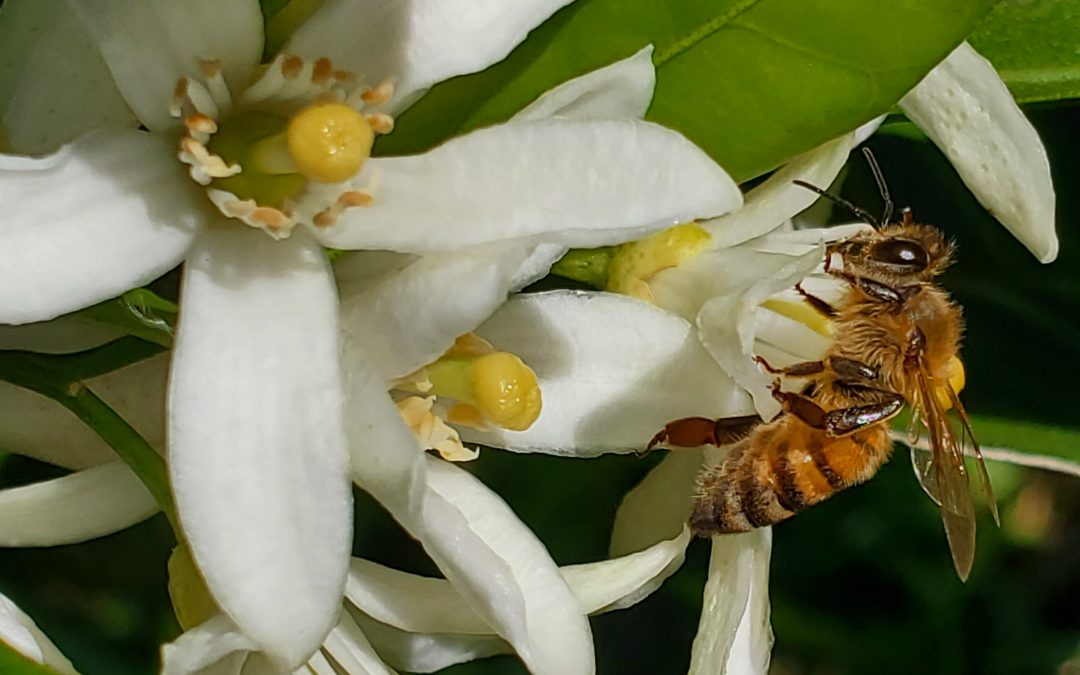
by Evan Anderson | May 18, 2022
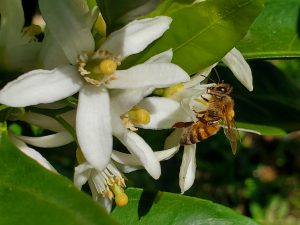 When people think of livestock, honeybees may not be the first thing that comes to mind. Bees are, however, a very significant part of agriculture. It is estimated that 30% of the crops we use for food are pollinated by honeybees. That’s around $15 billion of crops! On top of that, these hardworking insects also produce honey, wax, and other products that we can use.
When people think of livestock, honeybees may not be the first thing that comes to mind. Bees are, however, a very significant part of agriculture. It is estimated that 30% of the crops we use for food are pollinated by honeybees. That’s around $15 billion of crops! On top of that, these hardworking insects also produce honey, wax, and other products that we can use.
For those who want to get into the world of beekeeping, it can be a challenge to absorb all the information that’s out there. Thankfully, there are resources out there to assist. If you or someone you know are interested in apiculture, you might try:
Online resources. The University of Florida (UF) publishes research-based information in its EDIS publications. For topics relating to beekeeping specifically, you can go here: https://edis.ifas.ufl.edu/entity/topic/beekeeping. From there you can find links to specific publications, such as the Florida Beekeeping Management Calendar and much more. UF also has a Honey Bee Research and Extension Lab with online resources about their Master Beekeeper program and Bee College at https://entnemdept.ufl.edu/honey-bee/.
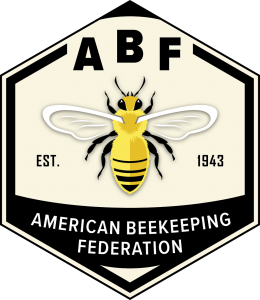 The American Beekeeping Federation maintains a website with tons of information on beekeeping at https://www.abfnet.org/. From there you can join the federation, find local groups, and find nationwide educational opportunities and resources for beekeepers.
The American Beekeeping Federation maintains a website with tons of information on beekeeping at https://www.abfnet.org/. From there you can join the federation, find local groups, and find nationwide educational opportunities and resources for beekeepers.
The Florida Department of Agriculture and Consumer Services (FDACS) requires beekeepers to register hives. You can find information on that here: https://www.fdacs.gov/Agriculture-Industry/Bees-Apiary/Apiary-Inspection. This site has a lot of extra information on beekeeping and links to other resources as well!
Local Resources. While digital sources of information can help, nothing can take the place of simply having other beekeepers to go to for answers. Local beekeeping organizations are a great place to start. Listed by county, here are some from across the panhandle:
As always, your local Extension office is available for help as well. Happy beekeeping!

by Ray Bodrey | May 12, 2022
The Annual Tupelo Honey Festival will be held Saturday, May 21st from 9 am – 4 pm central time at Lake Alice Park in Wewahitchka. This is an exciting event, with your chance to take part in a local treat. Area honey producers will be on hand, selling their honey in a variety of sizes. There will also be food, art & crafts, and live music.
For decades, tupelo honey has been synonymous with Gulf County. The nectar from the tupelo gum tree (Nyssa ogeche), produces some of the finest honey in the world. The common name “tupelo” is derived from language of the Muscogee Nation, also known as the Creek Indian Nation. The meaning of the word is “swamp tree”, as this tree flourishes in areas of wet soils and seasonal flooding. Gulf County is home to one of the largest tupelo forests on earth.
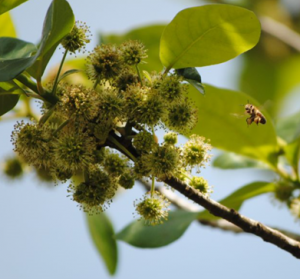
Honeybee visiting tupelo blossoms. Photo Credit: Gulf County Tourist Development Council
The tupelo bloom season lasts from approximately mid-April to the end of May. This is an anxious time for beekeepers. Tupelo blooms are very temperamental and delicate in nature. For this short period, beekeepers hope for little wind or rain and no cold temperatures, as any of these factors can make or break tupelo honey production. Regardless of seasonal impacts, the demand for Gulf County’s tupelo honey never subsides.
Please visit http://www.tupelohoneyfestival.com/ for more information on the festival. For more information on beekeeping, contact Gulf County Extension at 639-3200.
UF/IFAS Extension is an Equal Opportunity Institution.
by Ray Bodrey | Apr 28, 2022
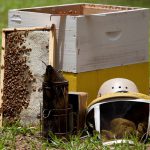 University of Florida IFAS Extension and the Beekeeping in the Panhandle Working Group have once again teamed up to offer the 9th Annual Beekeeping in the Panhandle Conference on Friday May 6th and Saturday May 7th 2022 at the Washington County Ag Center Auditorium.
University of Florida IFAS Extension and the Beekeeping in the Panhandle Working Group have once again teamed up to offer the 9th Annual Beekeeping in the Panhandle Conference on Friday May 6th and Saturday May 7th 2022 at the Washington County Ag Center Auditorium.
This year’s event will feature: Hands-on open hive experiences, presentations on the latest in research-based beekeeping management practices, interaction with expert beekeepers, vendors with beekeeping equipment, and hive products. Door prizes will be available as well!
The registration fee for the event will be $35 for one day or $55 for both days and $15 per day for youth 12 and under.
The activities will take place from 8:00 am – 5:00 pm Central Standard Time each day and will include a catered lunch.
Location: 1424 Jackson Avenue, Chipley, FL
Ways to register:
Registration link: https://www.eventbrite.com/e/9th-annual-beekeeping-in-the-panhandle-conference-trade-show-tickets-269199873067
Or drop by the Washington County Office at 1424 Jackson Avenue in Chipley.
For more information contact Washington County Extension Office at (850) 638-6180.
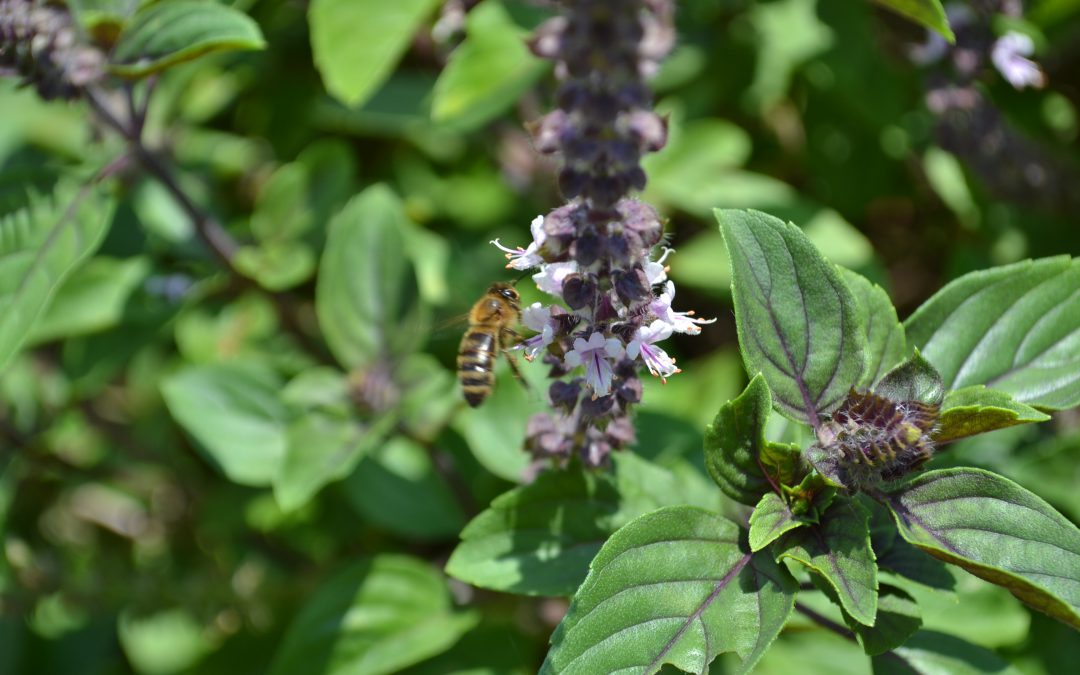
by Beth Bolles | Sep 30, 2021
We hope that you enjoyed the live Q&A with the University of Florida Extension Agent Evan Anderson and Research Coordinator Chris Oster of the UF Honey bee Research and Extension Lab. Below are the questions with the publication links that were provided during the discussion.
What is the best way to get started with a 0.25 acre, residential yard?
How to keep the bee colony in the winter?
How much room should I have for a couple small hives? How many hives should I start with…3?
How much time is involved in the care of the bees and their hive?
Is there a small hive available for a tiny back yard?
What equipment is needed to get started?
Does placing bee hives a certain minimum distance apart help to reduce honey bee colony mortality?
Does Dr. Leo Sharashkin’s Russian concept of horizontal hives fit the environment of the Florida Panhandle?
What is the best treatment for varroa mites?
Identifying behaviors displayed, in order to split the hive. Best time to add supers?
What are good plants for honey bees?
I live near farm fields that use commercial pesticides, can I still bee keep? What are the concerns and how do I mitigate them?
As a first year beekeeper, does all of the rain we’ve experienced this year create any problems that I should be looking for?
Should we be worried about the Asian Giant Hornets in the Florida Panhandle?
We have identified honey bees, cutter bees and carpenter bees in our garden. Should we provide a bee house?
Any killer bees in the area?
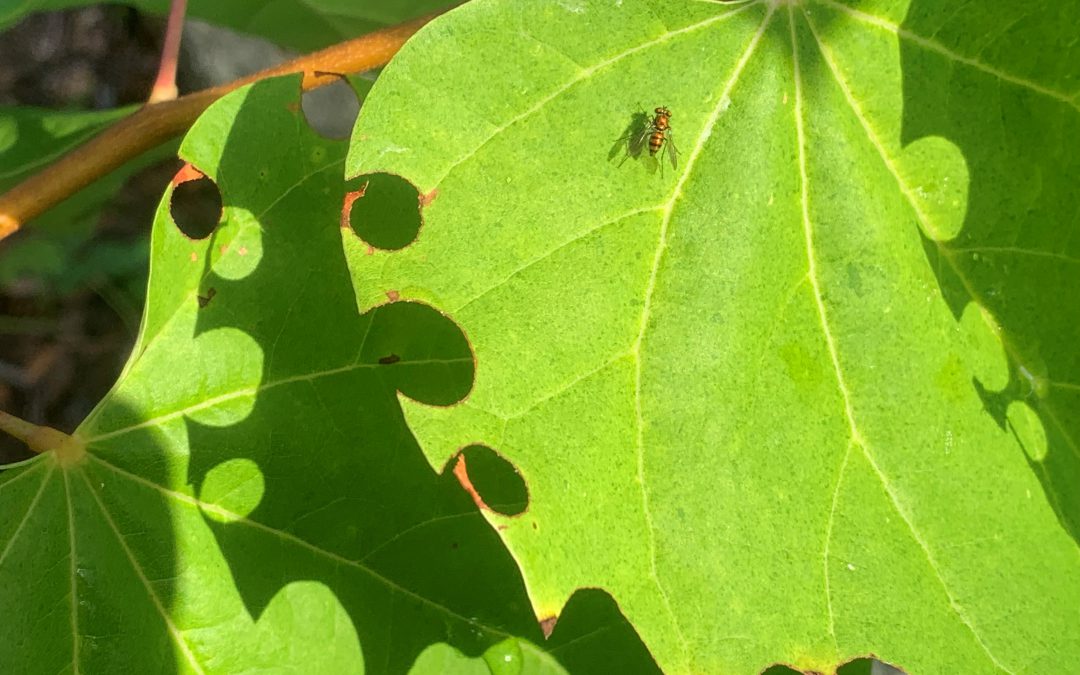
by Beth Bolles | Aug 18, 2021
In a garden with a variety of flowers, pollinators will be abundant. Sometimes we don’t always recognize the specific pollinator when we see it, but there are some native pollinators that leave other signs of their activity. One of our medium-sized native bees will leave a distinctive calling card of recent activity in our landscape.
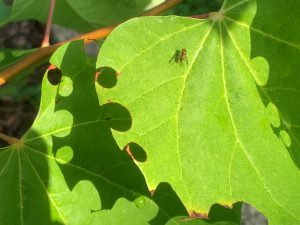
Leafcutter bees have collected circular notches from the edges of a redbud tree. Photo by Beth Bolles, UF IFAS Extension Escambia County.
If you see some of the leaves of trees and shrubs with distinct circular notches on the edges of the leaves, you can be sure the Leafcutter bee is present. The females collect the leaf pieces to make a small, cigar-shaped nest that may be found in natural cavities, such as rooting wood, soil, or in plant stems. Each nest will have several sections in which the female places a ball of pollen and an egg. The emerging larvae then have a plentiful food source in order to develop into an adult bee.
When identifying a leafcutter bee in your landscape, look for a more robust bee with dark and light stripes on the abdomen. These bees also have a hairy underside to their abdomen where they carry the pollen. When loaded with pollen their underside will look yellow.
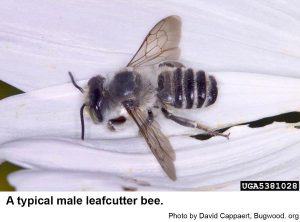 Leafcutter bees are solitary bees that are not considered aggressive. A sting would only be likely if the bee is handled. Your landscape will have many plants that a leafcutter may use for nesting material. The pollinating benefits of these bees far outweigh any cosmetic injury to the plant leaf margins.
Leafcutter bees are solitary bees that are not considered aggressive. A sting would only be likely if the bee is handled. Your landscape will have many plants that a leafcutter may use for nesting material. The pollinating benefits of these bees far outweigh any cosmetic injury to the plant leaf margins.
Visit Featured Creatures to see a photo of the leaf pieces made into a nest.

 When people think of livestock, honeybees may not be the first thing that comes to mind. Bees are, however, a very significant part of agriculture. It is estimated that 30% of the crops we use for food are pollinated by honeybees. That’s around $15 billion of crops! On top of that, these hardworking insects also produce honey, wax, and other products that we can use.
When people think of livestock, honeybees may not be the first thing that comes to mind. Bees are, however, a very significant part of agriculture. It is estimated that 30% of the crops we use for food are pollinated by honeybees. That’s around $15 billion of crops! On top of that, these hardworking insects also produce honey, wax, and other products that we can use.![]() The American Beekeeping Federation maintains a website with tons of information on beekeeping at https://www.abfnet.org/. From there you can join the federation, find local groups, and find nationwide educational opportunities and resources for beekeepers.
The American Beekeeping Federation maintains a website with tons of information on beekeeping at https://www.abfnet.org/. From there you can join the federation, find local groups, and find nationwide educational opportunities and resources for beekeepers.






